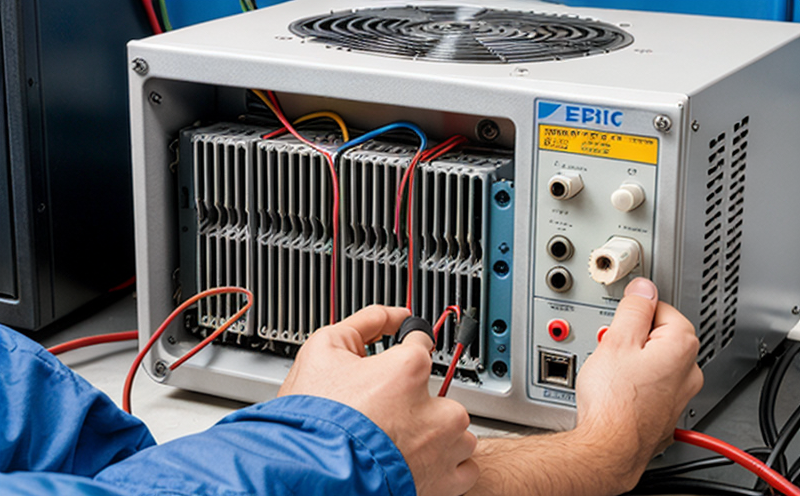IEC 60092-702 Overload Protection Testing of Electrical Systems
The IEC 60092-702 standard provides a detailed framework for the testing and qualification of electrical systems used in marine and shipboard environments. This standard ensures that these systems are capable of withstanding overloads without compromising safety or performance, which is critical given the harsh conditions often encountered at sea.
The purpose of this test is to verify that the overload protection devices installed within the electrical system function correctly under specified fault conditions. Overload protection is essential because it prevents damage to equipment and ensures continued operation during minor faults, while also safeguarding against catastrophic failures by limiting the duration of a severe fault condition.
The standard defines various test methods designed to simulate real-world scenarios that may occur in marine environments. These include testing under short-circuit conditions, load imbalance, and other abnormal operating conditions that could lead to overload. The tests are conducted on the installed electrical systems to ensure they meet the specified performance criteria.
The key components of this test include the following:
- Testing of circuit breakers and fuses under short-circuit fault conditions
- Evaluation of residual current devices (RCDs) for their response to ground faults
- Assessment of motor protection relays in handling overload situations
The acceptance criteria for this test are stringent and are defined by the IEC standard. The primary goal is to ensure that all components function as intended during an overcurrent event, thereby maintaining the integrity of the system and safety of personnel.
During testing, it’s essential to perform thorough pre-test inspections of the electrical systems. This includes verifying that all connections are secure, grounding is intact, and that the test setup complies with the standards specified in IEC 60092-702. After the tests, a detailed report is generated, which documents the results of each test scenario.
The testing process involves simulating fault conditions to observe how the overload protection devices respond. This might include applying current levels far beyond nominal operating values to assess the performance and durability of these protective elements. The data collected during this phase is critical for ensuring that all components meet the required standards and are suitable for marine environments.
Compliance with IEC 60092-702 ensures that electrical systems in ships and marine equipment meet international safety requirements, thereby enhancing reliability and performance. This compliance also facilitates smoother regulatory approvals and reduces the risk of non-compliance penalties or recalls.
The standard is widely recognized across the global maritime industry, making it a crucial part of any quality management process for shipbuilders and marine equipment manufacturers. By adhering to this standard, companies demonstrate their commitment to safety, reliability, and adherence to international best practices in electrical system design and testing.
Industry Applications
- Marine vessels of all sizes, from small pleasure craft to large container ships
- Offshore oil and gas platforms requiring robust electrical systems that can withstand harsh environments
- Riverine and inland navigation vessels where strict safety standards are essential
- Specialized research vessels and polar expedition ships facing extreme weather conditions
Why Choose This Test
The IEC 60092-702 Overload Protection Testing is a critical step in ensuring the reliability, safety, and compliance of electrical systems used in marine environments. By choosing this test, you ensure that your equipment meets international standards, which can be vital for regulatory compliance.
Testing helps identify potential issues before they become major problems, potentially saving significant costs in the long run. It also enhances the reputation of the manufacturer or service provider by demonstrating a commitment to quality and safety.
This test is not just about meeting standards; it’s about ensuring that your equipment performs reliably under the most challenging conditions. The ability to withstand overloads without failure can mean the difference between a safe operation and a costly disaster at sea.
By choosing this testing service, you are investing in the future safety of your crew and assets. Compliance with IEC standards is a key step towards achieving these goals and ensures that your equipment is fit for purpose in one of the harshest operating environments on Earth.
Use Cases and Application Examples
The IEC 60092-702 Overload Protection Testing has numerous real-world applications, particularly for marine equipment manufacturers and shipbuilders. Here are some specific use cases:
- New Product Development: Ensuring that new electrical systems meet the stringent requirements of IEC standards before commercial launch.
- Quality Assurance: Regular testing to ensure ongoing compliance with industry regulations and best practices.
- Retrofitting Existing Systems: Upgrading or modifying existing equipment to bring it into line with current safety and performance requirements.
- Polar Expedition Ships: Testing systems that will operate in extreme cold temperatures, ensuring they can handle overloads without failure.





